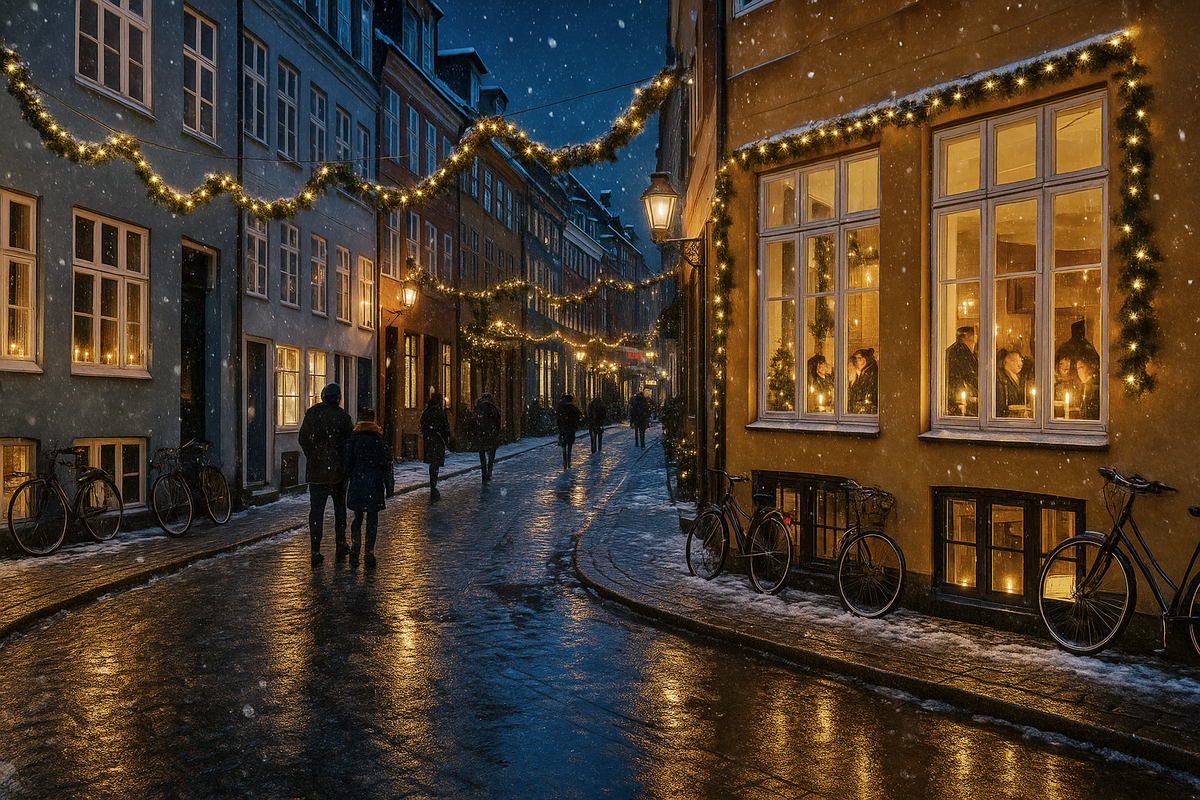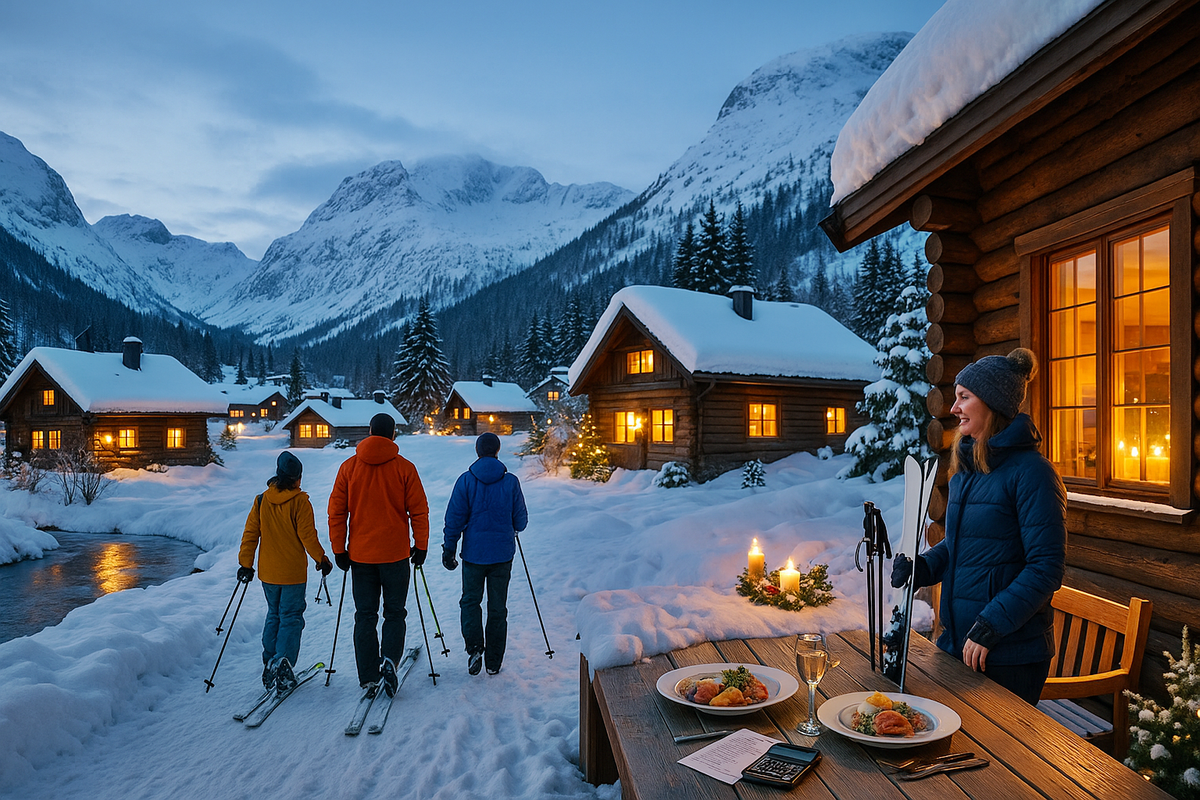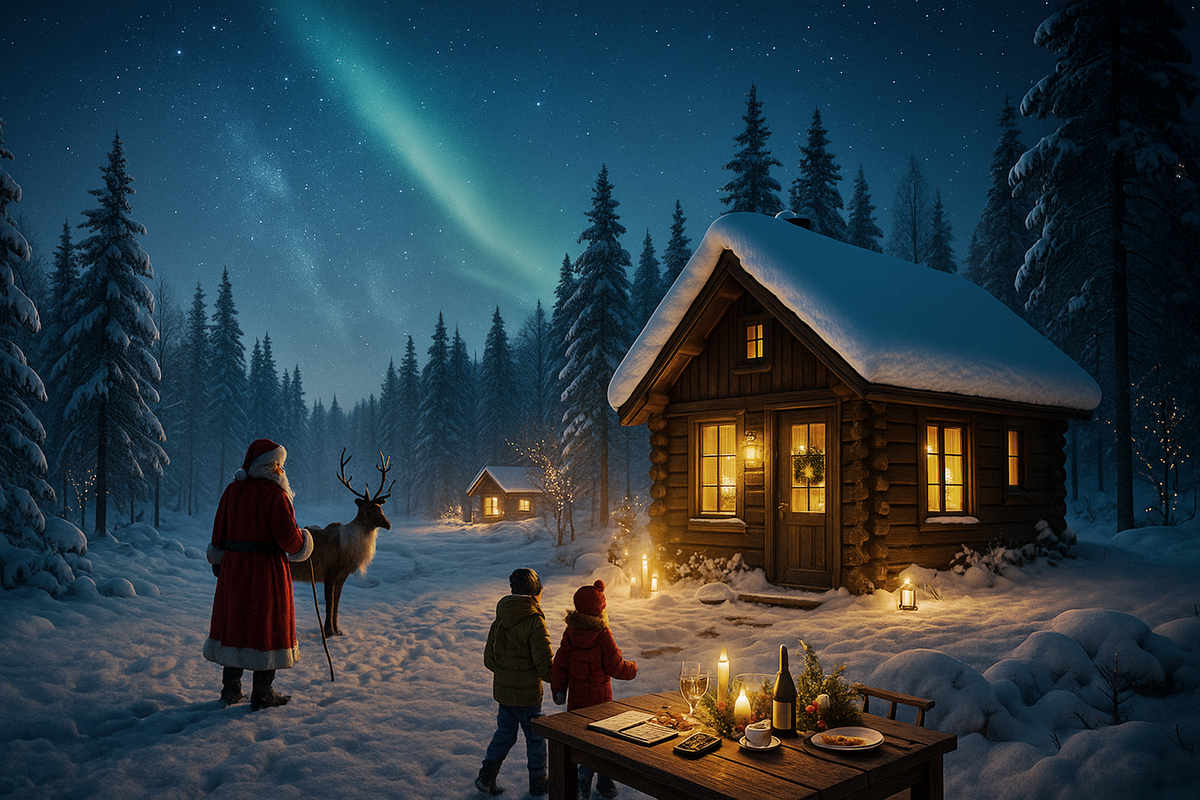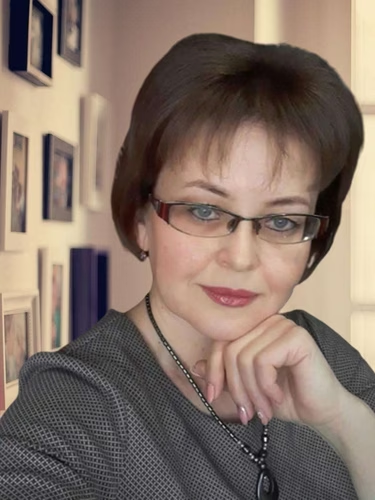❄️ Scandinavian winter: how Denmark's New Year and Christmas traditions differ from those of Norway, Sweden and Finland
From the outside, Scandinavia often looks like a single winter postcard: lights, snow, Christmas trees, hot mulled wine and the word jul in all languages. But behind the common framework lie four different moods: Danish hygge without guaranteed snow, Norwegian mountains and skiing, Swedish Lucia and julbord, Finnish Lapland and Joulupukki.
If you are planning a trip for Christmas or New Year and choosing a country ‘where winter will be truly special’, it is important to understand not only the weather and prices, but also what kind of holiday scenario you are buying.
This article examines the common Nordic framework and shows how Denmark, Norway, Sweden and Finland differ in terms of atmosphere, rituals, food and travel format.
🧭 The common Scandinavian framework for winter holidays

❄️ In all four countries, the winter season is built around jul — a long period of anticipation of Christmas, Advent, and family traditions. The differences are in the details, but the basic elements are very similar.
🔹Common elements that you will encounter almost everywhere
- 🎁 The main family evening is on 24 December. On this day, families gather around the table, have dinner, open presents and spend time together.
- 💛 A mixture of Christian and ancient traditions. Christmas is intertwined with older yule/jul rituals: the winter solstice, legends about house spirits (nisse, tomte, etc.), and ideas about protecting the home and family during the dark season.
- 🍽️ Focus on light and food. Candles, garlands, lights in the windows, mulled wine/gløgg, lavish Christmas tables, corporate julebord/julefrokost.
- 🎄New Year's Eve is less family-oriented. 31 December is a time for friends, fireworks and city nightlife; Christmas remains more homely and quiet.
✅ Mini checklist of “Scandinavian commonalities”
| 🧩 What they have in common | 👁️ What it looks like on the spot |
|---|---|
| 🎄 24 December | Family dinner, presents, candles, often a church service |
| 🕯️ Advent | Calendars, wreaths, candles, pre-Christmas gatherings |
| 🌌 Jul / Yule | Historical roots, images of household spirits, reference to the solstice |
| ✨ Light against darkness | Sea of lights, candles in windows, street garlands, lanterns |
| 🎆 New Year | Fireworks, city squares, parties, champagne |
On top of this common layer, each country builds its own focus: Denmark — on hygge and lights, Norway — on mountains and snow, Sweden — on Lucia and julbord, Finland — on Lapland and ‘Santa's homeland.’
❄️ Denmark: hygge, lights and Christmas without guaranteed snow

Denmark is more about ‘lamps and candles’ in winter windows than guaranteed snowdrifts. Winters here are milder, but that is precisely why the Danes have perfected the art of hygge.
🏙️ Atmosphere and city scene
- 🎄Juleaften on 24 December is the most important evening of the year: family dinner, songs, dancing around the Christmas tree, then presents.
- ✨ December in the cities means illuminations in the centre, shop windows, Christmas markets and Copenhagen with Tivoli in total fairy-tale mode. There may or may not be snow, but there will be plenty of lights and decorations.
- 🎆 Contrast: The 24th is very quiet and family-oriented; the 31st is noisy, with fireworks and parties.
🍽️ Traditions and food
- 🥂 Christmas lunches julefrokost in December are a genre unto themselves: herring, pork knuckle/belly, hot dishes, desserts, schnapps.
- 🍒 The symbolic dessert is risalamande (a rice dessert with almonds and cherry sauce); whoever finds a whole almond wins a small gift.
- ❤️ The decor includes paper hearts, woven decorations, Advent candles, and a minimalist but warm style.
🎯 For which travellers is Denmark the ‘right’ winter destination
- 🏡 For those who love cities, lights and cosy interiors, rather than mountains and deep snow.
- ☕ For those who want a comfortable urban Christmas weekend with fairs, cafes, wine and leisurely walks.
🏔️ Norway vs Denmark: snow, mountains and ‘long jul’

Norway relies on the same jul as Denmark, but the feeling of winter here is more often “active” and ‘natural’.
🌄 Atmosphere: from fjords to mountain huts
- Jul as a long season. The Christmas holiday period in Norway stretches from Advent to early January, with a strong emphasis on home comfort and connection with nature.
- In the cities, there are lights, fairs, and traditional markets, but very often the winter scenario includes skiing, trips to huts, and mountain or forest walks.
- The likelihood of a ‘real snowy picture’ is higher than in Denmark, especially if you go beyond the mildest coastal cities.
🍽️ Food and rituals
- The Christmas table is often dominated by ribbe (pork) or pinnekjøtt (mutton), baked dishes, potatoes, cabbage and sauces.
- Similar to Danish rice porridge, gingerbread, gingerbread houses and stories about house spirits (nisse/fjøsnisse), who are always left a treat.
- New Year's Eve is similar in structure to the Danish one: fireworks, feasting, sometimes in the same hut after skiing.
🔍 Key differences from Denmark for tourists
- Climate. Norway is more likely to have snow and mountains, while Denmark has a mild climate and a stable urban format.
- Holiday format. Norway is a mix of city and active outdoors; Denmark is primarily urban Christmas and hygge indoors.
If you are choosing between Copenhagen and, for example, Oslo or Bergen, the choice is most often between ‘lights and cosiness’ and ‘snow and active days’.
🔔 Sweden vs Denmark: Lucia, julbord and national rituals

Sweden is closer to Denmark in terms of mild winters, but differs significantly in its Advent rituals and national customs.
🌟 Lucia: a winter marker that its neighbours do not have
- 13 December is Saint Lucia's Day: processions in white clothes, with wreaths and candles, songs and children's/adult choirs.
- Lucia is associated with special pastries (lussekatter), gingerbread cookies, and hot glögg — a distinct part of the December atmosphere that you won't see in this form in Denmark.
📺 Julbord and media traditions
- Julbord is a large-scale Christmas buffet: several ‘rounds’ of herring, fish, meat dishes, casseroles, side dishes and desserts.
- A separate highlight is the Christmas television ritual with the Disney block (Kalle Anka), which is watched by a large part of the country on Christmas Eve.
- Compared to Denmark, hygge is slightly less prominent, but mass rituals (Lucia, julbord, television programmes) play a significant role.
❄️ How Sweden differs from Denmark in terms of atmosphere
- Swedish December is more ‘filled’ with events even before 24 December: Lucia, themed concerts, corporate julbord.
- Denmark is more about soft, intimate hygge, while Sweden is about combining home comfort with distinctive national traditions.
🎅 Finland vs Denmark: Joulupukki, Lapland and the ‘northern fairy tale’

Finland stands out from the rest of Scandinavia with Lapland and the image of Joulupukki, the local version of Santa Claus.
🎄 Urban Finland: Helsinki and classic joulu
- In Helsinki, the Christmas season visually resembles Copenhagen: lights, fairs, Christmas shop windows, coffee shops.
- Traditions include rice porridge in the morning, the official announcement of ‘Christmas peace’ from Turku, the important role of the sauna as part of the holiday, and a rich table with casseroles, ham, and fish.
🦌 Lapland and Joulupukki: a product for ‘children's dreams’
- Lapland is positioned as ‘Santa's homeland’: Joulupukki ‘lives’ in the vicinity of Rovaniemi, and parks, villages and themed attractions are built around it.
- This is about deep winter: snow, polar night, northern lights, snowmobiles, dog sleds, reindeer farms.
- Unlike the Danish scenario, this is more often an expensive complex product with flights, transfers and accommodation packages.
🧭 Finland and Denmark through the eyes of a tourist
- If Denmark is an urban Christmas weekend, Finland (especially Lapland) is a full-fledged winter adventure, often with a higher budget.
- It is important to distinguish between Helsinki as a relatively affordable city option and Lapland as a separate, expensive ‘fairytale’ product.
📊 Summary comparison: how winter is ‘felt’ in different countries
Table of impressions and scenarios
| Parameter | Denmark | Norway | Sweden | Finland |
|---|---|---|---|---|
| Overall feeling | Hygge and city lights | Snow, mountains, nature | Lucia rituals and julbord | “Home of Santa”, Lapland |
| Chance of snow | Low–medium | Medium–high | Medium | High (especially Lapland) |
| Main focus of December | Home Christmas, markets | Family + cabins + active holidays | Lucia, julbord, TV traditions | Joulupukki, sauna, winter parks |
| Typical trip format | City break | City + mountains / fjords | City + Advent rituals | City or Lapland package |
| Best suited for | Lovers of cosy cities | Lovers of snow and outdoor activities | Those who value rituals and traditions | Families with children, “winter romantics” |
🧳 How to choose a country for your winter scenario

✨ If you want ‘lights, cosiness and minimal stress’
Choose Denmark. This is the best scenario for those who want:
- a compact city break,
- Christmas lights and fairs,
- maximum hygge in cafés, museums and hotels,
- mild weather without extreme cold and long journeys.
❄️ If you want snow, activities and the feeling of a ‘real winter’
Look towards Norway. It offers:
- a combination of city and mountain/forest locations,
- high chances of snow,
- the opportunity to include skiing, trips to cabins and fjords.
💔 If rituals and the ‘Advent’ part of the holidays are important to you
Then Sweden is a strong candidate:
- Lucia on 13 December as a bright cultural marker,
- atmospheric julbord and Christmas programmes,
- a large-scale media and nationwide component of the holiday.
🦌 If your dream is Santa, Lapland and a ‘polar fairy tale’
Your scenario is Finland, primarily Lapland:
- Joulupukki, theme parks and villages,
- the northern lights and deep winter,
- a ‘once in a lifetime’ experience for families with children and lovers of northern exoticism.
✅ Conclusion: four different answers to the question ‘where to go for a winter fairy tale’

Scandinavian winter is not one universal picture, but four different scenarios that are based on common jul traditions but differ in atmosphere, climate and holiday format.
Denmark offers gentle urban hygge, Norway offers mountains and snow, Sweden offers Lucia and julbord with strong Advent rituals, and Finland offers Lapland and Joulupukki.
For the trip to really ‘work,’ it is important to honestly answer not only the question ‘where is it beautiful,’ but also ‘what kind of winter do I want: lights, mountains, rituals or fairy tales about Santa’ — and then choose the country, route and budget accordingly.
❓FAQ
✅ Denmark is more about urban hygge and lights, Norway is about snow and mountains, Sweden is about Lucia and julbord, and Finland is about Lapland, Joulupukki and the ‘polar fairy tale’.
✅ For more guaranteed snow and winter activities, it makes more sense to choose Norway or Finnish Lapland rather than the mild Danish winter.
✅ Sweden stands out for its vibrant Advent rituals and special dates such as Lucia.
✅ For a mild climate, fairs, lights and the most comfortable city break, Denmark is the best choice, especially Copenhagen.
✅ For a ‘visit to Santa’ format and a strong children's component, it is wisest to go to Finland, to the Lapland region.





0 comments
Log in to leave a comment